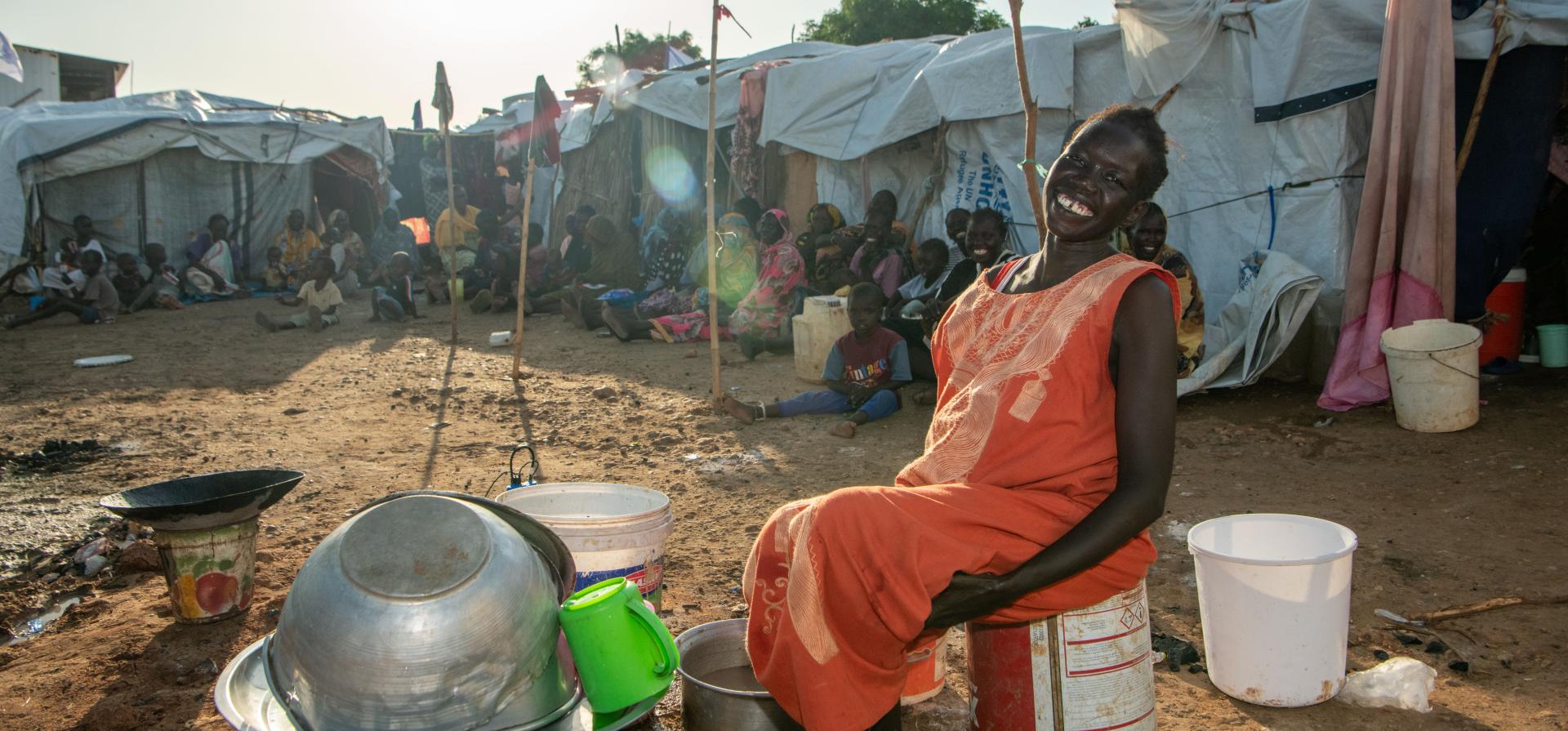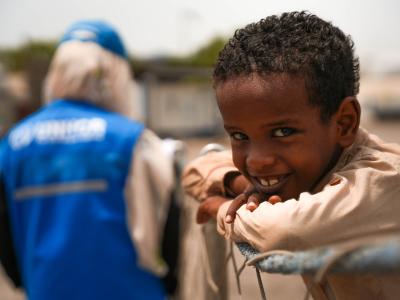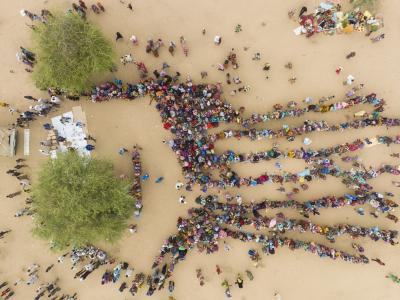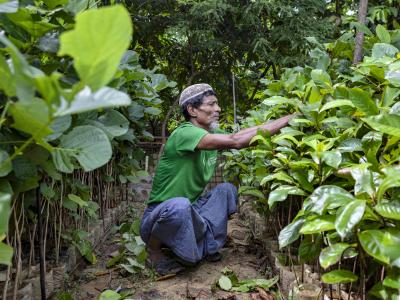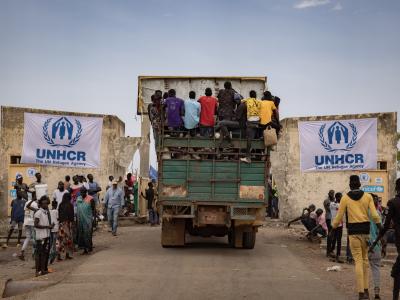Regional overview
Overall, the region’s forcibly displaced and stateless population rose by 32%. Many asylum claims received inconsistent treatment, resulting in a regional asylum backlog of 323,000.
A severe lack of funding meant that 4.4 million refugees depending on food aid received only 30-60% of the full ration.
Meanwhile, the number of people displaced in their own country included 14.9 million displaced by conflict and 4.5 million displaced by climate-related disasters, the latter mainly in Kenya, Somalia, Ethiopia, and South Sudan. UNHCR provided core relief items, shelter materials and protection support to those affected.
The biggest displacement emergency of 2023 erupted in the East and Horn of Africa and the Great Lakes region when conflict broke out in Sudan in April. 5.5 million people were internally displaced and 1.3 million fled to neighbouring countries such as Chad, Ethiopia, Egypt, and South Sudan. UNHCR helped to receive and register refugees and provided live-saving support.
In Sudan, UNHCR established additional field sites and provided core relief items to 130,000 people, cash assistance to 100,000, and shelter assistance and protection support. UNHCR activated communication channels using its Help website, the Telegram app and phone hotlines, and carried out remote protection monitoring through community networks.
Almost 300,000 people fled violence in the Somali region of Laascaanood, including 100,000 who crossed into Ethiopia, where UNHCR and local authorities provided integrated services within host communities, and built emergency shelters, water supplies and latrines. UNHCR distributed dignity kits and cash assistance to people displaced within Somalia and provided medical support and counselling to survivors of gender-based violence.
As well as supporting almost 1 million refugees in Ethiopia, UNHCR provided shelter support and core relief items to 570,000 Ethiopians who were internally displaced or returning from displacement. UNHCR supported the drafting of a national IDP law, following Ethiopia’s ratification of the Kampala Convention.
Violence in the Democratic Republic of the Congo sent thousands fleeing into the United Republic of Tanzania and Uganda. New arrivals received protection, health care, shelter and water, and scannable ration cards.
In a major step towards refugee inclusion, Kenya launched the “Shirika Plan”, aiming to transform refugee camps into integrated settlements, with refugees and their hosts living side-by-side.
Across the region, 51% of refugee children were out of school, compared to 40% of non-refugees. UNHCR focused on refugees’ inclusion in national education systems, achieving significant results. Enabling legal and policy environments and costed plans were developed by Member States of the Intergovernmental Authority on Development (IGAD). At least 10% of refugee children were included in national education systems, but insufficient financing limited progress.
Despite UNHCR’s efforts to increase people’s self-reliance by combining cash and livelihood interventions, underfunding meant only 900,000 individuals received cash grants, compared to 1.2 million in 2022. There is strong commitment for refugees’ economic inclusion, but a 2023 UNHCR regional livelihoods survey indicated that 66% of refugees live in countries with limited or no access to formal employment. UNHCR expanded its development partnerships with the World Bank, the African Development Bank, and the European Commission’s Department for International Partnerships, yielding significant financial support for projects in the region.
Only a fraction of the displacement in the region was resolved. UNHCR assisted 26,000 Burundian refugees to return, a 21% increase from 2022. Returnees received cash packages to support their initial basic needs upon arrival in Burundi. 527,000 refugees returned to South Sudan, most fleeing conflict in Sudan.
UNHCR submitted 35,750 cases for resettlement and 28,000 refugees departed, double the 2022 number.
Regional expenditure and budget
$875 million spent against a budget of $2.161 billion
$1.285 billion of unmet needs or 59% of the budget
Population overview
Financial overview
Trends in response
Multisectoral monitoring results
Protection

Basic needs


Shelter

Health



Nutrition

4.6 million people received protection services*
2022 result: 7.1 million
*Protection services encompasses a vast range of community-based, individual and household interventions in various domains of UNHCR protection work, including counselling and information on rights, sensitization on protection issues, community outreach and mobilization, specialized services for children or other persons with specific needs, GBV programming, legal assistance, registration and documentation, Refugee status determination and resettlement case-work, protection monitoring.
1.2 million people received cash assistance
2022 result: 1.2 million
2 million people received non-food items including core relief items*
Indicator not available in 2022
*This indicator reflects the total number of people who benefited from the direct distribution of in-kind non-food items, including domestic Core Relief Items (CRIs) and excluding shelter CRIs.
499,000 people received shelter and housing assistance*
Indicator not available in 2022
*Shelter and housing assistance includes emergency, transitional and durable shelter provision, collective shelter, shelter repair and maintenance, and rental programming.
6.8 million people received essential health care services
2022 result: 4.8 million
931,000 women and girls received sexual and reproductive health services*
2022 result: 477,700
*Sexual and reproductive health services include antenatal care, assisted delivery, postnatal care, family planning services and health services for survivors of gender-based violence.
337,000 people received mental health and psychosocial support services
2022 result: 117,900
107,200 children 6-59 months were admitted for treatment of moderate acute malnutrition (MAM)
2022 result: 88,900
56,400 children 6-59 months were admitted for treatment of severe acute malnutrition (SAM)
2022 result: 46,900
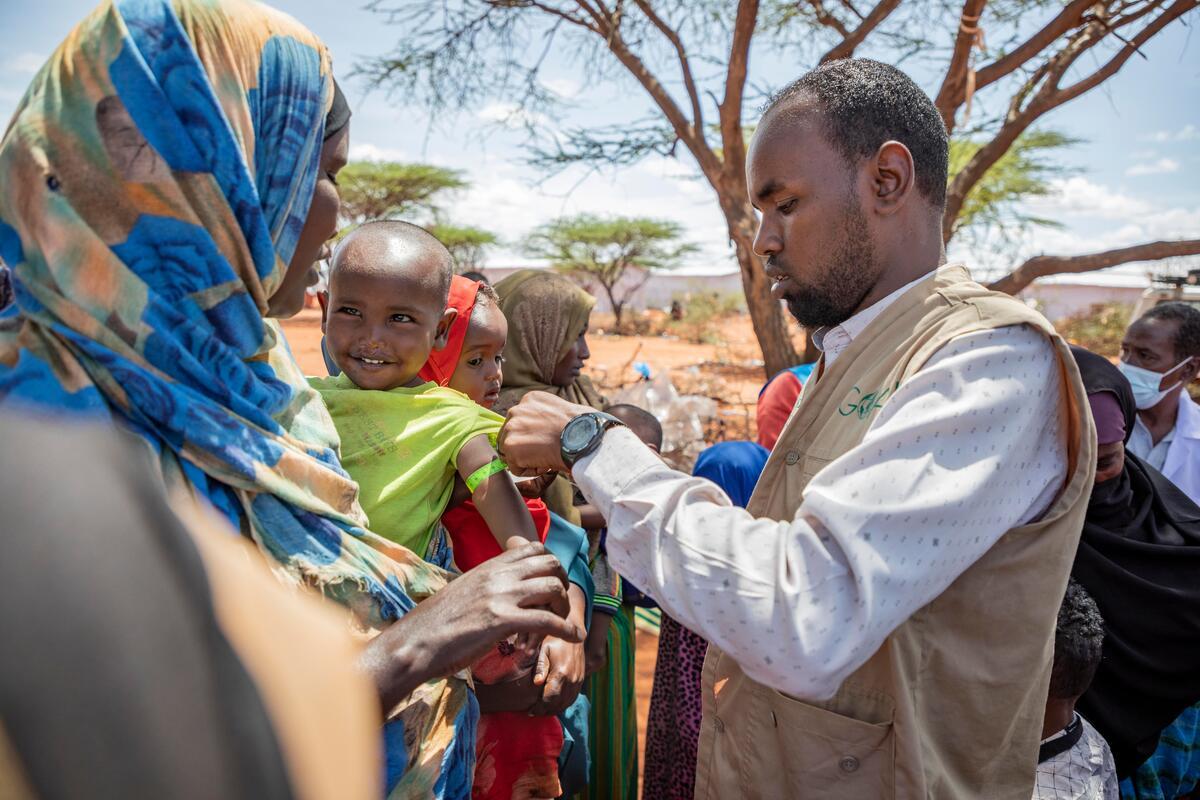

Fundación “la Caixa’s” commitment to the nutrition of refugee mothers and children
Partnering with UNHCR and España con ACNUR [in Spanish] for over 20 years, the Foundation's MOM project in Ethiopia continues to combat child malnutrition with tailored care for children, pregnant women, and lactating mothers. Its support has resulted in a remarkable 95.4% rate of exclusive breastfeeding of children under 6 months in Gambella's refugee camps, surpassing UNHCR's target of 75%. The impact of the Foundation’s support was all the more remarkable considering the droughts and conflict that affected forcibly displaced people in the country in 2023.
The Foundation also held a roundtable discussion on climate change's impact on food security at la Caixa Forum in Madrid and was part of the high-level event "Achieving health and well-being for all" at the Global Refugee Forum, demonstrating its commitment to addressing refugee nutrition comprehensively.
